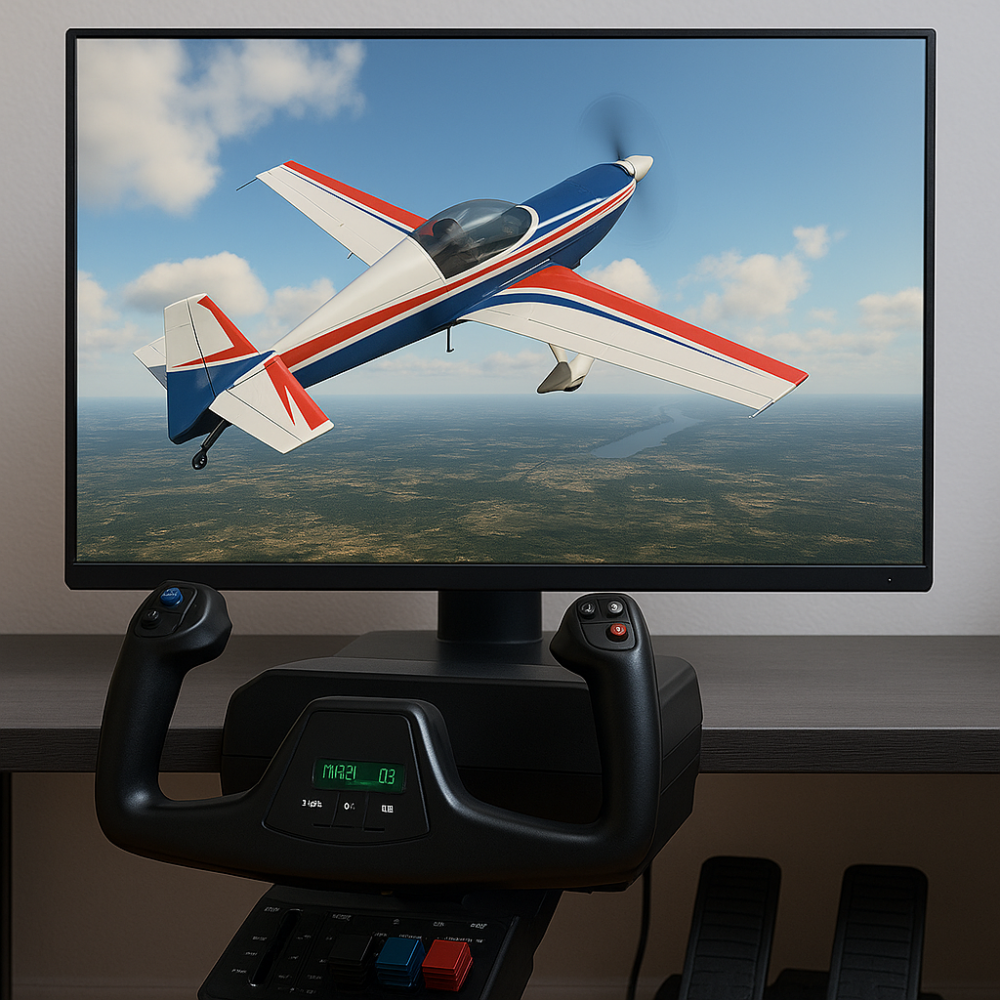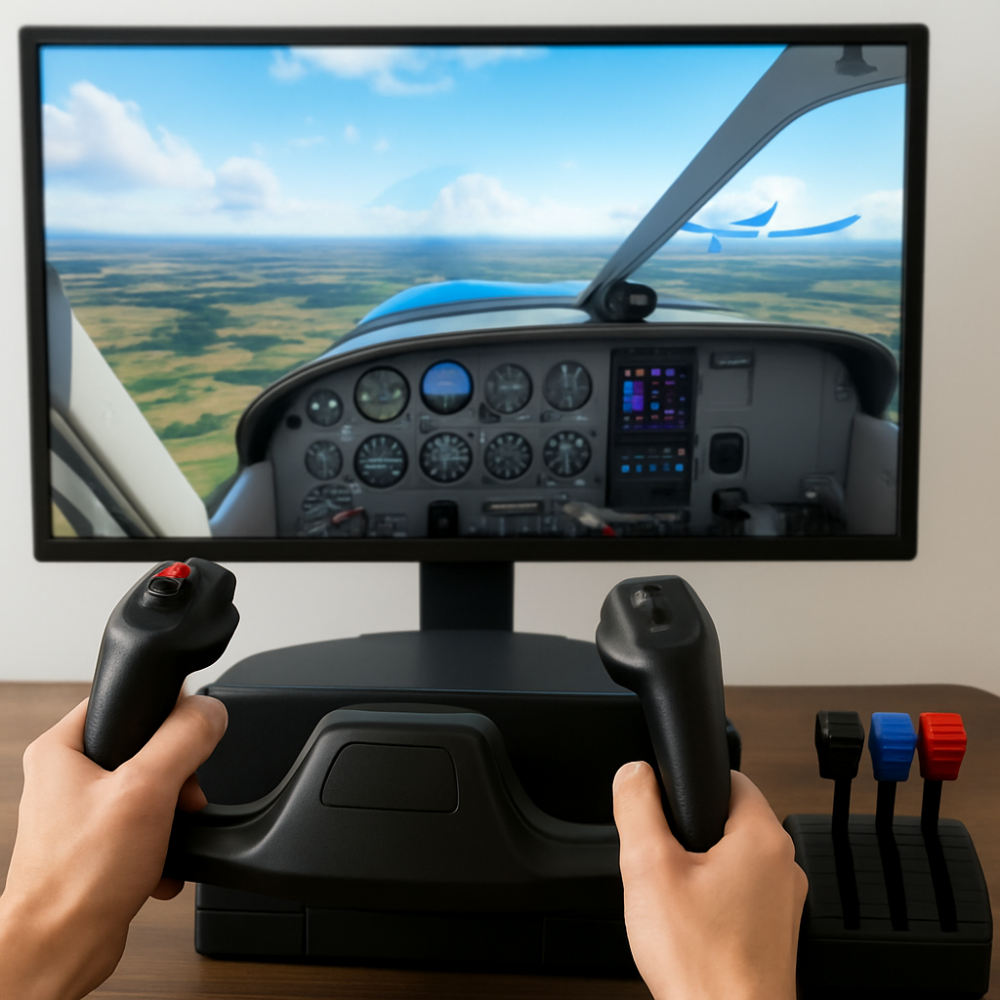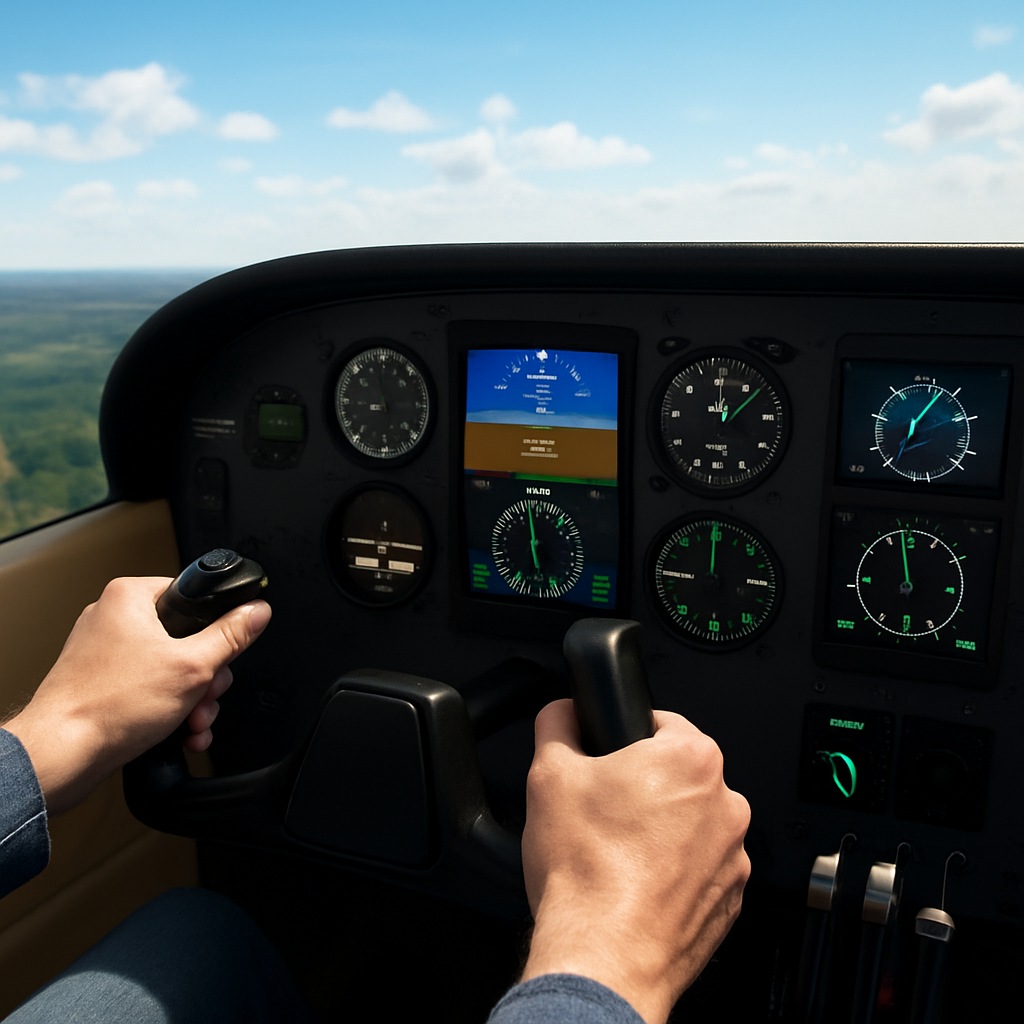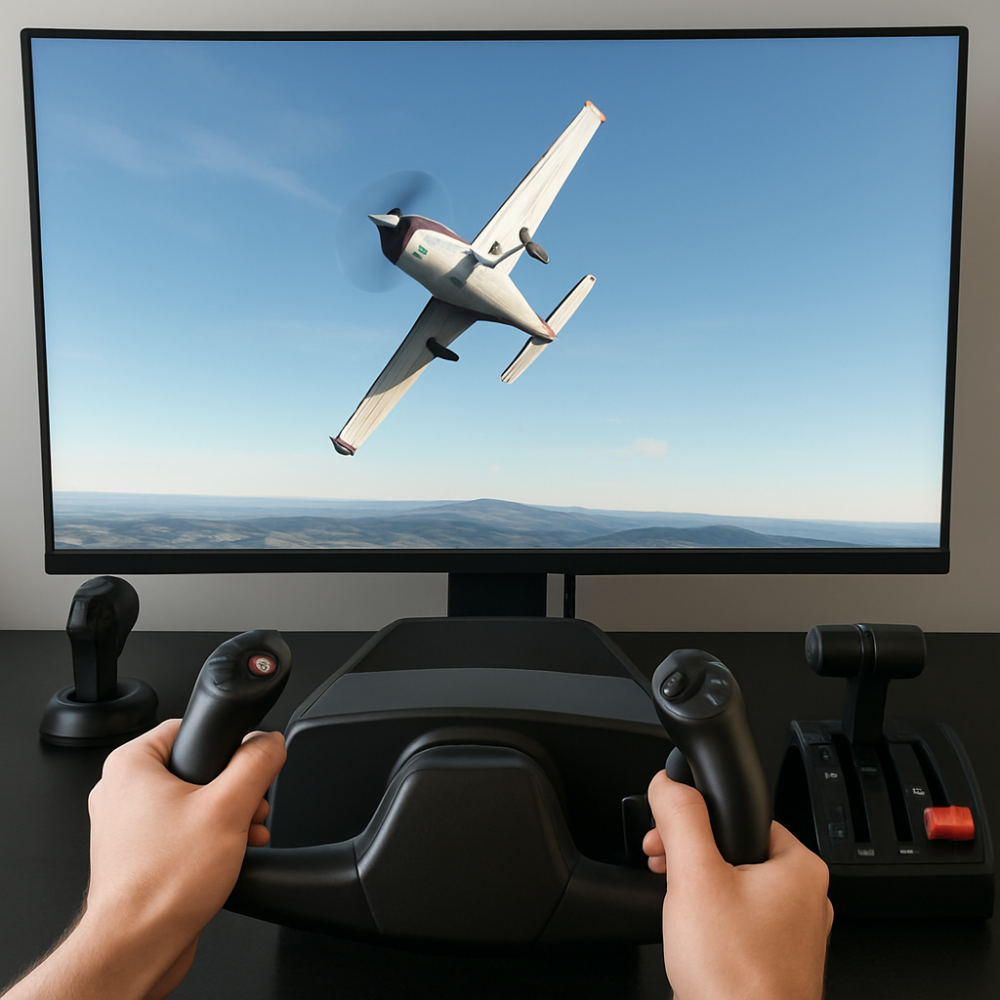
Imagine this: You’re in a flight simulator, gripping the joystick like you’re about to conquer the skies. But to really take off, you first gotta get the basics of aerodynamics down pat. That’s the magic behind the simulation world, and understanding it is key to mastering those maneuvers.
First up are the forces you can’t ignore: lift, drag, thrust, and weight. Picture lift as your aircraft’s best friend, pulling you upward. Drag is the pesky resistance you need to counteract, while thrust is that powerful push propelling you forward. And then there’s weight, the grounding force always keeping you in check. Getting a grip on how these interact sets you up for maneuvering like a pro.
In a simulator, these forces play out just like they do in real-world flying. Mastery here translates to smoother flights and sharper turns in the virtual skies. Recognizing how shifts in these dynamics impact your flight allows for strategic adjustments during those aerial stunts.
Bringing aerodynamic concepts from theory into the simulator pays off big time. It’s the core of aviation, but also your backstage pass to pulling off those graceful loops and rolls when you’re ready to step things up.
When you see how these principles work in simulations, it’s like unlocking a whole new level of understanding. You’re not just flying; you’re mastering the art of aerodynamics, making every maneuver count. Whether aiming for a textbook loop or executing a daring barrel roll, knowing these basics gives you the edge to soar with confidence.
🔗 Related Read: Understanding the Basics of Aerodynamics in Simulators – a beginner-friendly guide to the forces behind your aircraft’s behavior.
Basic Flight Control: The Path to Precision in Simulated Flights

So now that aerodynamics aren’t a mystery anymore, it’s time to meet your three best friends in the sim world: pitch, roll, and yaw. These are your go-to tools for steering smoothly through the virtual skies.
Pitch controls your rise and fall, rolling tips your wings, and yaw twists you left or right. Getting these right is like mastering the balance on a bicycle. Forget about looping the loop until these feel like second nature.
Starting with basic handling builds a rock-solid foundation. You wouldn’t hit the ski slopes without learning to pizza stop first, right? The same idea applies here. Practicing smooth, precise movements with these controls ensures you’re not just flinging your virtual plane around in a dizzying spin.
Beginner-friendly aerobatic planes in sims offer the perfect playground. They’re forgiving enough to help you master control without biting back too hard when you slip up. Often lighter and more responsive, these planes make it easier to get a feel for how each control changes your flight path.
🔗 Explore more: Extra 300 Discussion on FlightGear Forum – a user-supported aerobatic aircraft that’s popular among virtual pilots for learning precision maneuvers.
Remember, the key here is smoothness. Flicking controls around like a DJ at a mixer won’t get you far. Gentle inputs lead to steady turns and adjustments, crucial for executing maneuvers cleanly once you’re ready. Practice coordinated inputs to combine the use of rudder, stick, and throttle effectively.
Soon enough, those basic pitch, roll, and yaw techniques will become muscle memory. You’ll be setting yourself up beautifully for more advanced aerial stunts, leaving sloppy movements and frustrating stalls behind.
🔗 Getting started? Step-by-Step Flight Sim Setup Guide – perfect if you’re still building confidence with the basics.
Energy Management: The Art of Balancing Altitude and Airspeed

Once you’re feeling comfortable with the basics, it’s time to talk energy management. Imagine trying to keep a spinning plate balanced—altitude and airspeed are your high-flying equivalents, and nailing this balance is what keeps your maneuvers looking sharp.
Want your maneuvers to look sharp? It all comes down to managing your speed and altitude. Go too fast and you’ll overshoot the mark; too slow and you might stall mid-move. It’s a delicate balance. Timing is everything here.
So, how do you keep that balance? That’s where throttle control, trim adjustments, and coordinated inputs come in. These are like your fine-tuning tools, helping you maintain just the right energy level. Use the throttle to adjust your speed, and trim to stabilize your flight path. Work them together, and you’re preventing unwanted dips and spikes in your energy levels.
🔗 Need a performance boost? How to Optimize Your PC for Flight Simulators – a guide to improving smoothness and responsiveness.
When you’re in the middle of nailing that perfect loop or roll, chances are you’ll need to make tiny changes on the fly. Remember, small adjustments often count for a lot more than big ones. A subtle tweak here and there makes your maneuver look seamless. It’s like painting smooth brush strokes on a canvas rather than splashes.
Mastering energy management not only helps in perfecting individual moves but also when you start stringing together multiple maneuvers. Considering your energy needs across different tricks helps ensure each seamlessly flows into the next, avoiding awkward pauses or corrections during your sequences.
Aerial Maneuvers: Breaking Down the Basics

Ready to take your flight skills up a notch? It’s time to break down some classic aerial maneuvers that every aspiring virtual pilot should have in their bag of tricks.
First on the list is the loop. Imagine drawing a perfect circle in the sky, only with your plane. The key is entering with enough speed, smoothly pitching up, and staying aligned to close that circle without wobbling. It’s almost like the rollercoaster ride you control from behind the stick.
Then comes the barrel roll. Think of it like turning on a corkscrew, a graceful 360 around your forward axis. The trick here is timing your roll and pitch together to avoid a messy spin. It requires finesse rather than brute force, balancing your roll with a bit of lift.
The Immelmann is like hitting the reverse on a loop’s exit, flipping you to a higher altitude and a change in direction. This one’s a two-step: a half-loop up and then leveling off, making it perfect for evading imaginary foes or just repositioning yourself during practice sessions.
The Split-S flips the Immelmann on its head. Start with a half-roll, then pull back into a descending half-loop. It’s great for quick downshifts in altitude when you need to get out of those sticky situations.
Ever done a Cuban Eight? It’s like drawing a figure-eight on its side, combining loops and rolls into a flowing sequence starting with a 5/8th loop followed by a half-roll. It’s a true test of your energy management and control input harmony.
🔗 Building your setup? How to Set Up Your First Custom Flight Simulator – includes gear tips to practice these maneuvers more effectively.
Switching up your camera views from cockpit to external can help better visualize your path, keeping you on top of your game’s altitude, speed, and direction during these maneuvers.
Practicing these moves enhances your flying confidence. Remember, combining smooth control inputs with these basics lays the groundwork for improvising more complex routines.
Reflective Practice: Tools for Continuous Improvement
You’ve got the moves, and now it’s all about refining them to perfection. Recording your flights is like having your own sports replay—watching those runs helps spot where you aced it and where things got a bit wobbly.
Replay tools in your simulator are invaluable. Seeing your maneuvers in action, from both cockpit and third-person views, reveals insights you might miss in real-time. It’s this playback that lets you pause, rewind, and understand the subtle corrections needed.
Avoiding overcorrections during practice is crucial. Keep your control inputs smooth. Jerky movements not only spoil your maneuvers but can throw you off rhythm. Calmness is key, even in high-speed rolls or tight turns.
Feedback isn’t just for school quizzes. Use it to understand what works and what doesn’t in your maneuvers. Discuss your recordings with fellow flight sim enthusiasts or online communities. What you think went off-kilter might actually have a simple fix.
🔗 Join the conversation: AVSIM Flight Simulator Tips & Tricks Forum – a long-running community where sim enthusiasts share flying techniques, setup advice, and performance tips for Microsoft Flight Simulator and other major sims.
After reviewing, put your insights into action. Start combining maneuvers into smooth sequences. This helps you move beyond isolated tricks and into fluid, confident flying—like choreographing a routine in the sky.
Continuous practice not only helps polish technique but also cements your understanding of energy management and precise control. It’s the journey towards mastery, one flight at a time, where each session is a stepping stone to becoming more skilled and confident.
✈️ Final Approach: Ready to Take Your Skills Higher?
Mastering aerial maneuvers in a flight simulator isn’t just about pulling off loops and rolls — it’s about building control, awareness, and confidence with every session. Whether you’re just getting comfortable with pitch and yaw or working on chaining together a full Cuban Eight, you’re already on the path to precision flying.
So, fire up your sim, revisit those replays, and keep refining your technique one maneuver at a time. The skies — virtual or not — are yours to explore.
🛫 Looking to level up? Check out our step-by-step setup guide or explore more articles under Advanced Flight Sim Techniques right here on the site.
